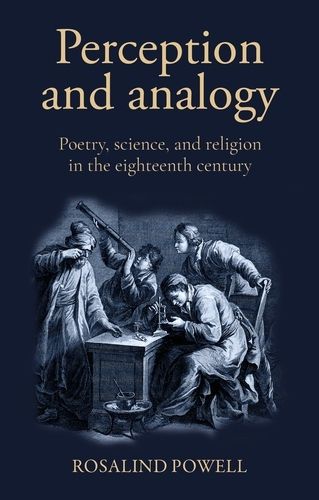Readings Newsletter
Become a Readings Member to make your shopping experience even easier.
Sign in or sign up for free!
You’re not far away from qualifying for FREE standard shipping within Australia
You’ve qualified for FREE standard shipping within Australia
The cart is loading…






Perception and analogy explores ways of seeing scientifically in the eighteenth century. The book examines how sensory experience is conceptualised during the period, drawing novel connections between treatments of perception as an embodied phenomenon and the creative methods employed by natural philosophers. Covering a wealth of literary, theological, and pedagogical texts that engage with astronomy, optics, ophthalmology, and the body, it argues for the significance of analogies for conceptualising and explaining new scientific ideas. As well as identifying their use in religious and topographical poetry, the book addresses how analogies are visible in material culture through objects such as orreries, camera obscuras, and aeolian harps. It makes the vital claim that scientific concepts become intertwined with Christian discourse through reinterpretations of origins and signs, the scope of the created universe, and the limits of embodied knowledge. – .
$9.00 standard shipping within Australia
FREE standard shipping within Australia for orders over $100.00
Express & International shipping calculated at checkout
Perception and analogy explores ways of seeing scientifically in the eighteenth century. The book examines how sensory experience is conceptualised during the period, drawing novel connections between treatments of perception as an embodied phenomenon and the creative methods employed by natural philosophers. Covering a wealth of literary, theological, and pedagogical texts that engage with astronomy, optics, ophthalmology, and the body, it argues for the significance of analogies for conceptualising and explaining new scientific ideas. As well as identifying their use in religious and topographical poetry, the book addresses how analogies are visible in material culture through objects such as orreries, camera obscuras, and aeolian harps. It makes the vital claim that scientific concepts become intertwined with Christian discourse through reinterpretations of origins and signs, the scope of the created universe, and the limits of embodied knowledge. – .